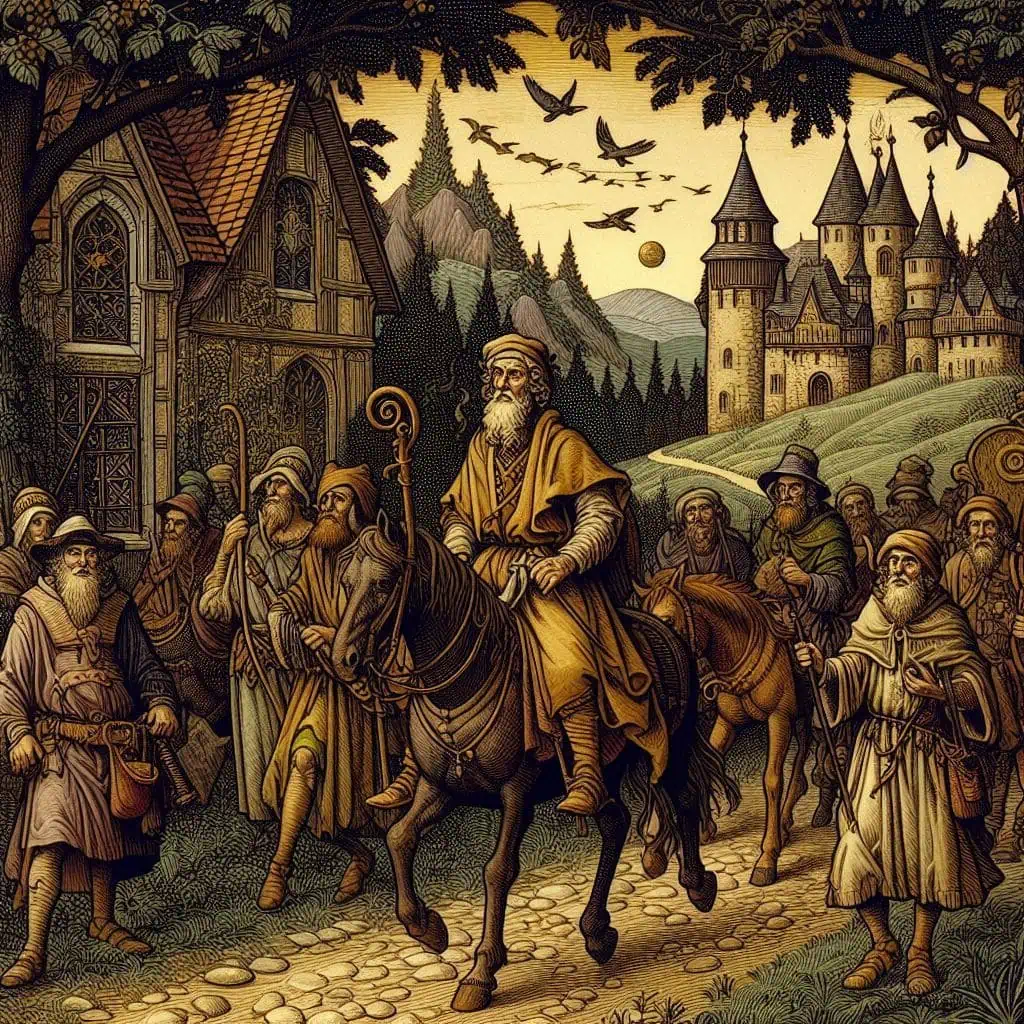The legend of the Wandering Jew emerged in the late medieval period as a cautionary Christian tale of eternal punishment and restless wandering. According to the myth, a man who mocked Jesus Christ on the way to Golgotha was cursed to walk the earth until the Second Coming. This figure became a powerful symbol in sermons, folklore, and art—embodying themes of sin, repentance, and divine justice. Across Europe, countless versions of the story spread, blending religious morality with fantastical elements, and reflecting the spiritual anxieties of medieval society.

The Story of the Wandering Jew
According to the medieval legend, a man—often called Cartaphilus—mocked Jesus Christ as He carried His cross toward Calvary. Urged by the onlookers to hurry, Jesus paused and declared that this taunting soul would be condemned to wander the earth until His Second Coming. Thus began the curse of the Wandering Jew, doomed to roam through history as a living testament to sin, repentance, and divine justice.

Who was the Wandering Jew?
The precise identity of the Wandering Jew is not known. It has been differently given by different sources. Some sources state that he was merely one of the Jews who lined Jesus’ walk to the Cross.
In other sources, it is stated that the said person was a doorkeeper at the estate of Pontius Pilate. Yet other traditions claim that the Wandering Jew was a tradesman, probably a shoemaker.
One of the names ascribed to the legendary Wandering Jew is Buttadeus. This name has Latin origins and means ‘someone who beats or strikes.’
The name derives from the story that the said person struck Jesus or pushed him to move faster towards Calvary. The Wandering Jew is also sometimes called the ‘Eternal Jew’ on account of the fact that he is condemned to roam the world till the End of Days.
Medieval Legends about Wandering Jew
Many legends sprang up about the Wandering Jew during the medieval period. One of these was that the Wandering Jew was granted a respite every year on Christmas.
On this day, he could rest by sitting on a plow only. Another legend had it that every 100 years, the Wandering Jew returned to the age of 30 which ensured that he remained immortal till the Second Coming.
Another story contained in the famous 13th-century work Flores Historiarum states that an Armenian bishop met a man in Armenia. This man claimed to be the Jew who struck and scolded Jesus to go faster. The bishop gave his name Cartaphilus.
According to the story, Cartaphilus later converted to Christianity and continued his endless days preaching or living a solitary life.
Claimed Sightings of the Wandering Jew
Towards the end of the medieval period and through Reformation, several claimed sightings of the Wandering Jew occurred. These coincided with a time when on the one hand, anti-Semitic sentiments were on the rise, and on the other hand, the Jewish Question had been raised.
One of these alleged sightings occurred in Hamburg in 1542. Other sightings occurred in other parts of Europe. Some have also been claimed to have occurred in the United States.
The Theme in Art and Culture
The theme of the Wandering Jew has been explored in the art and culture of Europe since the medieval ages. Many novels, plays, stories, and paintings have been made on the theme. The artists behind these works have broadly interpreted the character.






